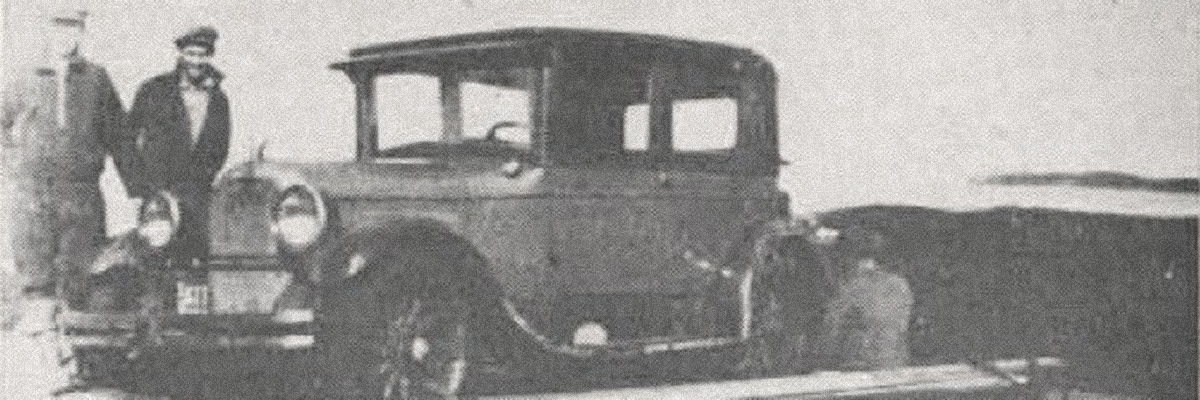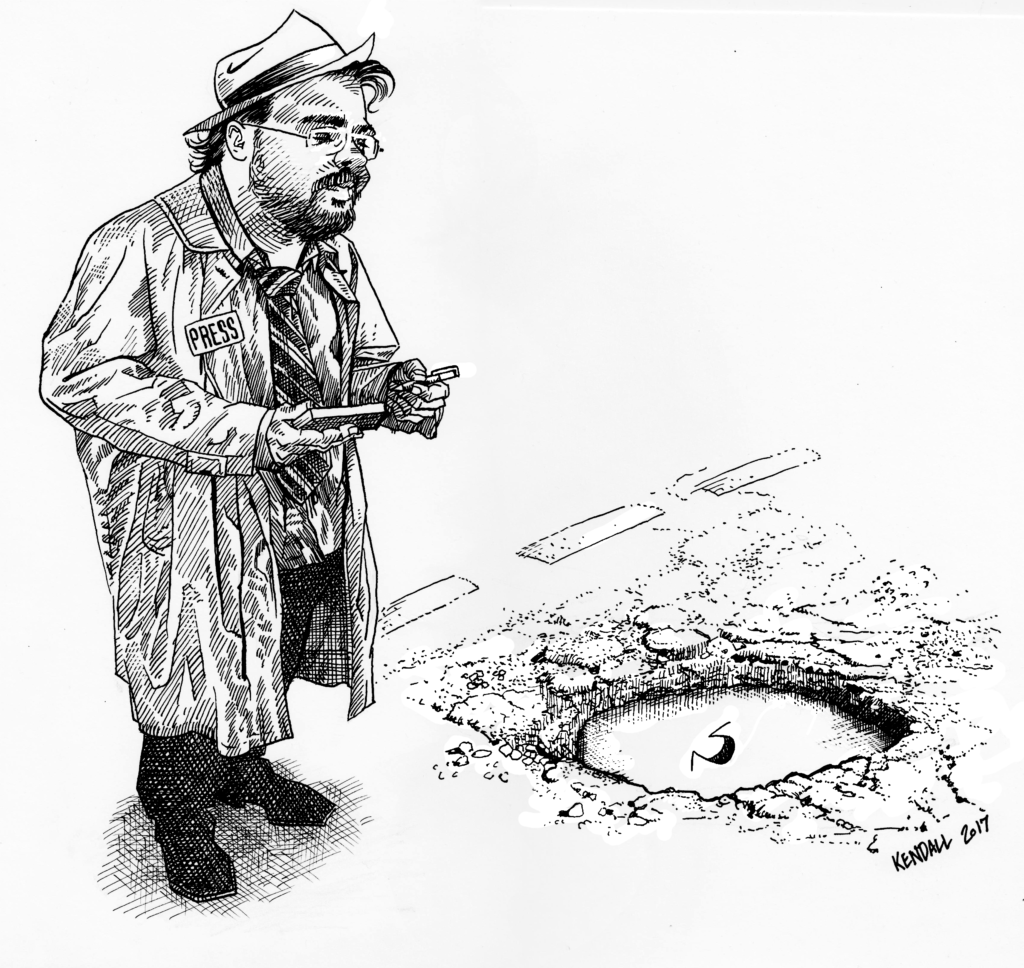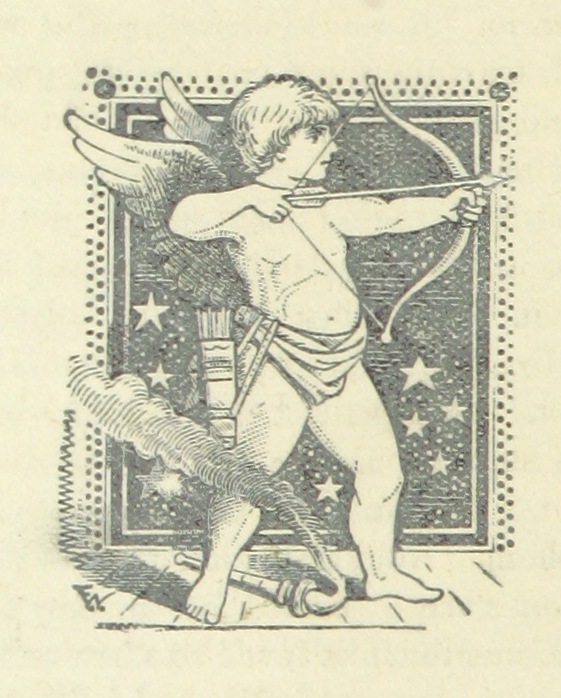Horseless Carriages and Cars on Rafts
May 2017
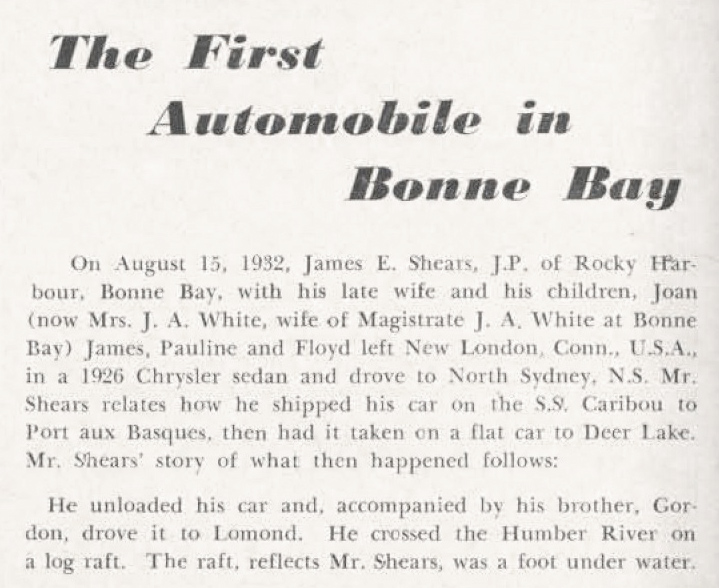
In trawling through older issues of Newfoundland Quarterly, I’m particularly looking for writing about landscape and place, stories about technology, and things that make me laugh. So far, the most perfect triangulation of those three things is “The First Automobile in Bonne Bay,” a story published in 1963 (though it takes place in 1932). James Shears, who was returning to the Bonne Bay area after years spent working in the U.S., was determined to bring along his car:
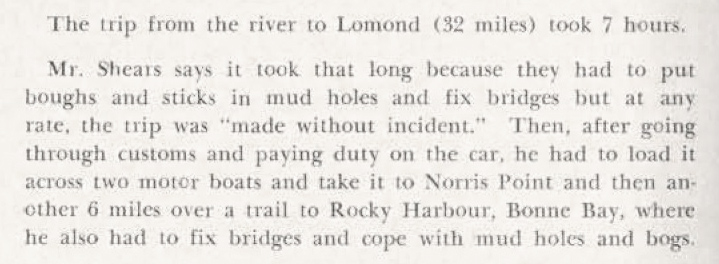
The first cars were imported into Newfoundland in April 1903 by brothers Robert and Harry Reid. In 1910, this photograph of “R.G. Reid in His Motor Car” appeared in Newfoundland Quarterly:
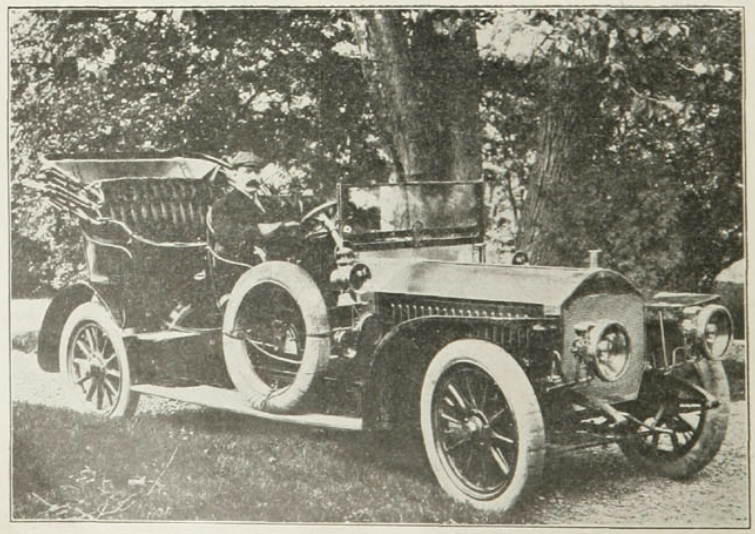
For a wonderful photograph of the same car parked near Cabot Tower, and more about early drivers in St. John’s, see Larry Dohey’s article Reckless Drivers — Speeding on St. John’s Streets.
Back to Bonne Bay in 1932:
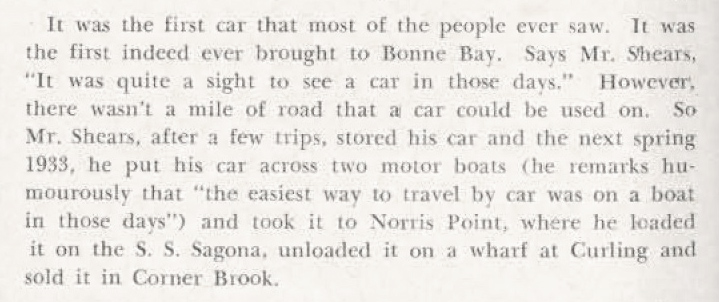
Had there been a road in Bonne Bay, Mr. Shears would have driven on the opposite side than we do today, as Newfoundland used British driving conventions until Confederation.
It took a while for motor vehicles to become a common sight outside of St. John’s. Bonne Bay was certainly not the last place for them to appear — my grandfather Reg Frampton, who grew up in Gin Cove, wrote that he first saw a car there in the 1940s. “We would do just about anything to get a ride in a car in those days,” he wrote in his memoirs. “Sometimes if we were walking along the road and heard a car coming towards us, we would turn around and start walking the other way, hoping to get picked up just so we could have a ride.”
Concluding the odyssey of The First Automobile in Bonne Bay:
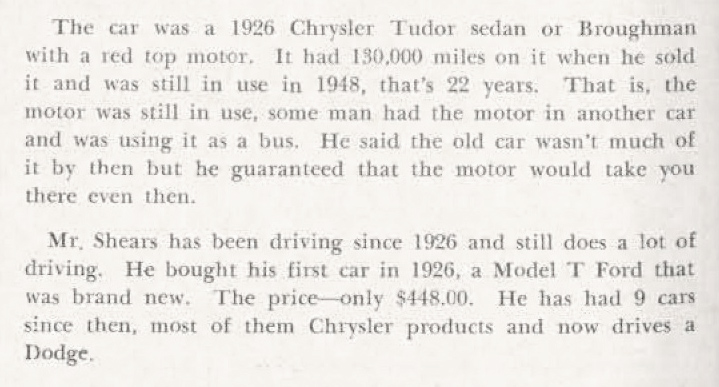
However, this isn’t the end of the story. Despite the headline, James Shears’s car was almost certainly not the first automobile in Bonne Bay. In his book The Good and Beautiful Bay: A History of Bonne Bay, Antony Berger writes that a car had been brought in by steamer at least two years earlier, and that William Young’s 1927 Dodge also arrived before Shears’s.
It was a long time before proper roads connected the communities of Bonne Bay. “Even as late as the 1950s,” writes Berger, “the road between Rocky Harbour and Norris Point was so bad that Johnny Pittman’s bus service between the two communities had to carry an axe to cut boughs to put under the wheels to get up the hill.”
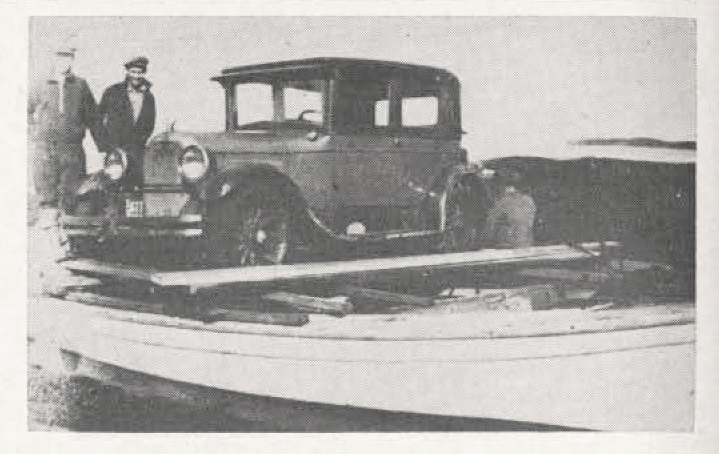
Finally, here’s another funny Newfoundland Quarterly story about cars, this one from 1953, titled What The Well-Dressed Pedestrian Should Wear:
A new scheme for pedestrian traffic made it’s appearance in London a few years ago, and with traffic conditions as they are in St. John’s to-day, one can speculate on the final result if such an innovation were adopted here. This scheme for getting the right-of-way in street crossing was in the form of a small horn carried in a walking stick, and the busy metropolis pedestrians and motorists too, stared with amazement at a nattily dressed little man from whose cane, at every intersection, a prolonged blast issued.
If such a device became a fad one can speculate on what “Standard equipment,” as the car salesmen say, would be necessary for the fully equipped pedestrian. The logical next steps would be to equip him with bumpers (front and rear), lights, and for rainy weather, windshield wipers for his glasses and for the absent-minded a direction marker could blink automatically when he suddenly decided to change direction. A walkie-talkie, of course, with aerial in your hat, would be extra.

This Cadillac ad appeared in Newfoundland Quarterly in 1914. Note the two-digit phone number!

